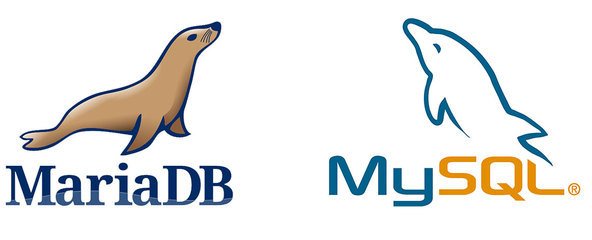Mysql object information instance usage summary
The information_schema database is the database that comes with the MySQL system, which provides access to database metadata. It feels like information_schema is like an encyclopedia of MySQL instances. It records most of the information we need to solve in the database, such as character sets, permissions, database entity object information, external check constraints, partitions, compressed tables, table information, and index information. , parameters, optimization, locks and things, etc. Through information_schema, we can see the running status of the entire MySQL instance, understand the basic information of the MySQL instance, and even optimize and maintain the database. It can be said to be a real encyclopedia, haha. The following is a general classification of these tables based on some small experiences I have learned, so that it is convenient for everyone to summarize. If there are any shortcomings, please point them out and I will modify them as soon as possible. 1: About the system tables related to character sets and collation rules CHARACTER_SETS: Stores database-related character set information (memory storage engine) COLLATIONS: The collation rules corresponding to the character set COLLATIO
1. In MySQL Detailed introduction to information_schema

##Introduction: The information_schema database is the database that comes with the MySQL system. It provides How to access database metadata. It feels like information_schema is like an encyclopedia of MySQL instances. It records most of the information we need to solve in the database, such as character sets, permissions, database entity object information, external check constraints, partitions, compressed tables, table information, and index information. , parameters, optimization, locks and things, etc. Through information_schema, we can see the running status of the entire MySQL instance, understand the basic information of the MySQL instance, and even optimize and maintain the database, etc. It can be said to be a real encyclopedia
2. Detailed introduction to Java reflection to obtain class and object information

Introduction: Reflection can It solves the problem that it is impossible to predict which class an object or class belongs to during compilation, and the information about the object and class must be known based on the information when the program is running. When two people collaborate on development, you only need to know the other party's class name to carry out preliminary development. Get the class object Class.forName(String clazzName) static method. Call the class attribute of the class. Person.class returns the class object of Person (recommended). Call the getClass() method of an object. The specific use should be selected according to the actual situation. ..
##3.Python data persistence storage: basic use of pickle module

4.
Using PHP's Reflection to obtain object information_PHP tutorial
Introduction: Using PHP's Reflection Get object information. PHP5 adds a new feature: Reflection. This feature allows programmers to reverse-engineer class, interface, function, method and extension. Through PHP code, you can get a certain5.
How to transfer object information in html pages_html/css_WEB-ITnose
Introduction: How to transmit object information in html pages6.
Use PHP's reflection to obtain object information
Introduction: Use PHP's Reflection to obtain object information. PHP5 adds a new feature: Reflection. This feature allows programmers to reverse-engineer class, interface, function, method and extension. Through PHP code, you can get a certain7.
ORACLE Recycle Bin current status query and sorting Introduction: In principle, the Recycle Bin is a data dictionary table that stores the database object information deleted by the user. Next, if you are interested in all aspects of the ORACLE Recycle Bin, you can Please refer to 8. ORACLE data dictionary usage example Introduction: ORACLE data dictionary is important One of the components, it comes with the creation of the database and changes with the changes of the database.
Embodied as some tables and views under the sys user. Data dictionary names are uppercase English characters.
The data dictionary contains user information, user permission information, all data object information, table constraints, statistical analysis database views, etc.
We cannot manually modify the information in the data dictionary.
Many times, the average ORACLE user does not know how to use it effectively.
di 9. Introduction to Oracle’s commonly used data dictionary Introduction: The data dictionary is where Oracle stores information about database objects. A set of table and view structures whose purpose is to describe data. For example, the creator information and creation time information of a table, 10. MySQL5 new features (data dictionary) Introduction: Because the use of metadata (metadata is those data about the database) has become more and more common, MySQL5 has also designed a special database in the product accordingly. The fixed name of this database is information_schema, the database appears as a central data dictionary, which contains all object information of the database [Related Q&A recommendations]:
The above is the detailed content of Mysql object information instance usage summary. For more information, please follow other related articles on the PHP Chinese website!

Hot AI Tools

Undresser.AI Undress
AI-powered app for creating realistic nude photos

AI Clothes Remover
Online AI tool for removing clothes from photos.

Undress AI Tool
Undress images for free

Clothoff.io
AI clothes remover

AI Hentai Generator
Generate AI Hentai for free.

Hot Article

Hot Tools

Notepad++7.3.1
Easy-to-use and free code editor

SublimeText3 Chinese version
Chinese version, very easy to use

Zend Studio 13.0.1
Powerful PHP integrated development environment

Dreamweaver CS6
Visual web development tools

SublimeText3 Mac version
God-level code editing software (SublimeText3)

Hot Topics
 1386
1386
 52
52
 Explain InnoDB Full-Text Search capabilities.
Apr 02, 2025 pm 06:09 PM
Explain InnoDB Full-Text Search capabilities.
Apr 02, 2025 pm 06:09 PM
InnoDB's full-text search capabilities are very powerful, which can significantly improve database query efficiency and ability to process large amounts of text data. 1) InnoDB implements full-text search through inverted indexing, supporting basic and advanced search queries. 2) Use MATCH and AGAINST keywords to search, support Boolean mode and phrase search. 3) Optimization methods include using word segmentation technology, periodic rebuilding of indexes and adjusting cache size to improve performance and accuracy.
 How do you alter a table in MySQL using the ALTER TABLE statement?
Mar 19, 2025 pm 03:51 PM
How do you alter a table in MySQL using the ALTER TABLE statement?
Mar 19, 2025 pm 03:51 PM
The article discusses using MySQL's ALTER TABLE statement to modify tables, including adding/dropping columns, renaming tables/columns, and changing column data types.
 When might a full table scan be faster than using an index in MySQL?
Apr 09, 2025 am 12:05 AM
When might a full table scan be faster than using an index in MySQL?
Apr 09, 2025 am 12:05 AM
Full table scanning may be faster in MySQL than using indexes. Specific cases include: 1) the data volume is small; 2) when the query returns a large amount of data; 3) when the index column is not highly selective; 4) when the complex query. By analyzing query plans, optimizing indexes, avoiding over-index and regularly maintaining tables, you can make the best choices in practical applications.
 Can I install mysql on Windows 7
Apr 08, 2025 pm 03:21 PM
Can I install mysql on Windows 7
Apr 08, 2025 pm 03:21 PM
Yes, MySQL can be installed on Windows 7, and although Microsoft has stopped supporting Windows 7, MySQL is still compatible with it. However, the following points should be noted during the installation process: Download the MySQL installer for Windows. Select the appropriate version of MySQL (community or enterprise). Select the appropriate installation directory and character set during the installation process. Set the root user password and keep it properly. Connect to the database for testing. Note the compatibility and security issues on Windows 7, and it is recommended to upgrade to a supported operating system.
 Difference between clustered index and non-clustered index (secondary index) in InnoDB.
Apr 02, 2025 pm 06:25 PM
Difference between clustered index and non-clustered index (secondary index) in InnoDB.
Apr 02, 2025 pm 06:25 PM
The difference between clustered index and non-clustered index is: 1. Clustered index stores data rows in the index structure, which is suitable for querying by primary key and range. 2. The non-clustered index stores index key values and pointers to data rows, and is suitable for non-primary key column queries.
 What are some popular MySQL GUI tools (e.g., MySQL Workbench, phpMyAdmin)?
Mar 21, 2025 pm 06:28 PM
What are some popular MySQL GUI tools (e.g., MySQL Workbench, phpMyAdmin)?
Mar 21, 2025 pm 06:28 PM
Article discusses popular MySQL GUI tools like MySQL Workbench and phpMyAdmin, comparing their features and suitability for beginners and advanced users.[159 characters]
 How do you handle large datasets in MySQL?
Mar 21, 2025 pm 12:15 PM
How do you handle large datasets in MySQL?
Mar 21, 2025 pm 12:15 PM
Article discusses strategies for handling large datasets in MySQL, including partitioning, sharding, indexing, and query optimization.
 How do you drop a table in MySQL using the DROP TABLE statement?
Mar 19, 2025 pm 03:52 PM
How do you drop a table in MySQL using the DROP TABLE statement?
Mar 19, 2025 pm 03:52 PM
The article discusses dropping tables in MySQL using the DROP TABLE statement, emphasizing precautions and risks. It highlights that the action is irreversible without backups, detailing recovery methods and potential production environment hazards.




